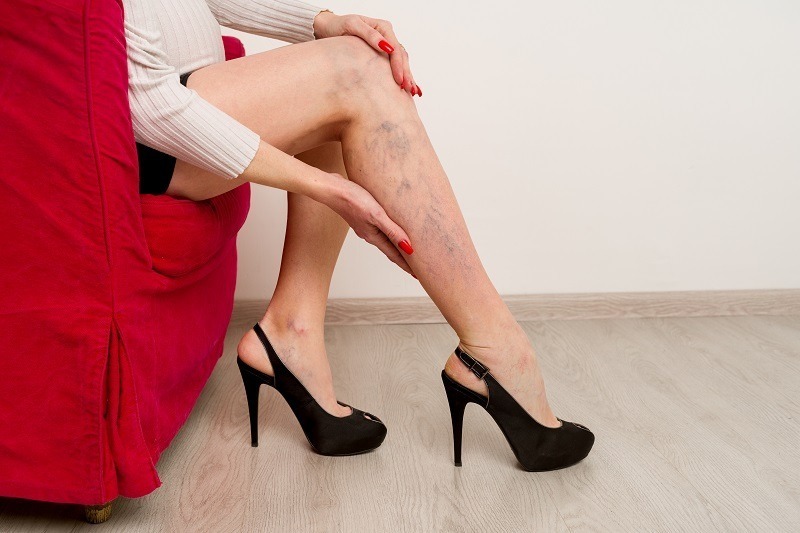
A vein specialist is a doctor who has added credentials in the evaluation and treatment of varicose veins, spider veins and leg swelling or lymphedema. Varicose or spider veins represent a chronic medical condition that progresses if left untreated and can lead to complications such as blood clots, skin changes, leg swelling, venous ulcers and bleeding. Spider veins are tiny bluish and reddish surface veins. They often appear on the legs and/or face resulting from increased pressure in the vein system. Varicose veins are very common. You are more at risk if you are older, are female, have obesity, don’t exercise, or have a family history of varicose veins.
Vein Treatment
Vein treatment serves to relieve symptoms of vein disease, prevent complications, and decrease the appearance of spider and varicose veins. Common treatments include sclerotherapy, surface laser treatments, endovenous techniques and surgery.
Sclerotherapy
Sclerotherapy is the most common technique and involves an injection into the vein which causes the walls of the vein to swell, stick together, and seal shut. The collapsed vein is reabsorbed into local tissue and eventually fades. The treatment is minimally invasive. Sclerotherapy can also improve related symptoms such as aching, swelling, burning and night cramps. Treated veins tend to fade within a few weeks, although occasionally it may take up to two months to see the full results. Sclerotherapy uses an irritating solution called a sclerosant. The sclerosant damages the innermost lining of the vessel, resulting in a clot that blocks the blood circulation in the vein beyond.
Endovenous
Endovenous uses radiofrequency or laser energy to cauterize and close varicose veins in the legs. It may be used for cosmetic purposes, but it is most commonly used to help alleviate related symptoms such as aching, swelling, skin irritation, discoloration or inflammation. Endovenous is safe, less invasive than conventional surgery, and leaves virtually no scars. This procedure closes and shrinks the varicose vein and causes scar tissue within the vessel, which seals off the vein. Blood then flows through other nearby veins instead. The procedure usually takes less than an hour.
VeinGogh
VeinGogh is a relatively new vein treatment that uses microburst technology to eliminate spider veins and networks of veins. VeinGogh uses an innovative process, known as the Ohmic Thermolysis System, which uses heat to collapse a damaged vein so it eventually fades. The unique microburst technology allows greater precision for physicians using VeinGogh to treat smaller spider veins. The precision lowers the risk of surrounding tissue and vessels suffering heat damage during treatment. It also allows for treatment of more sensitive areas.
Micro-Phlebectomy
Micro-phlebectomy is a varicose vein treatment used to treat certain types of varicose veins. The word “phlebectomy” means removing the vein. The day of the procedure, your leg will be marked where the veins bulge out. Then, a special local anesthetic is injected into the area surrounding the leg vein. The doctor will make any incisions of about 1-2mm and use a crochet-type hook to grab the vein and remove it. This interrupts the vein, causes any remaining portions of the vein to atrophy, and gets rid of the bulgy areas. The recovery time for this leg vein removal procedure is negligible. Patients need to take it easy for the first 48 hours, but walking is encouraged to promote healing.

